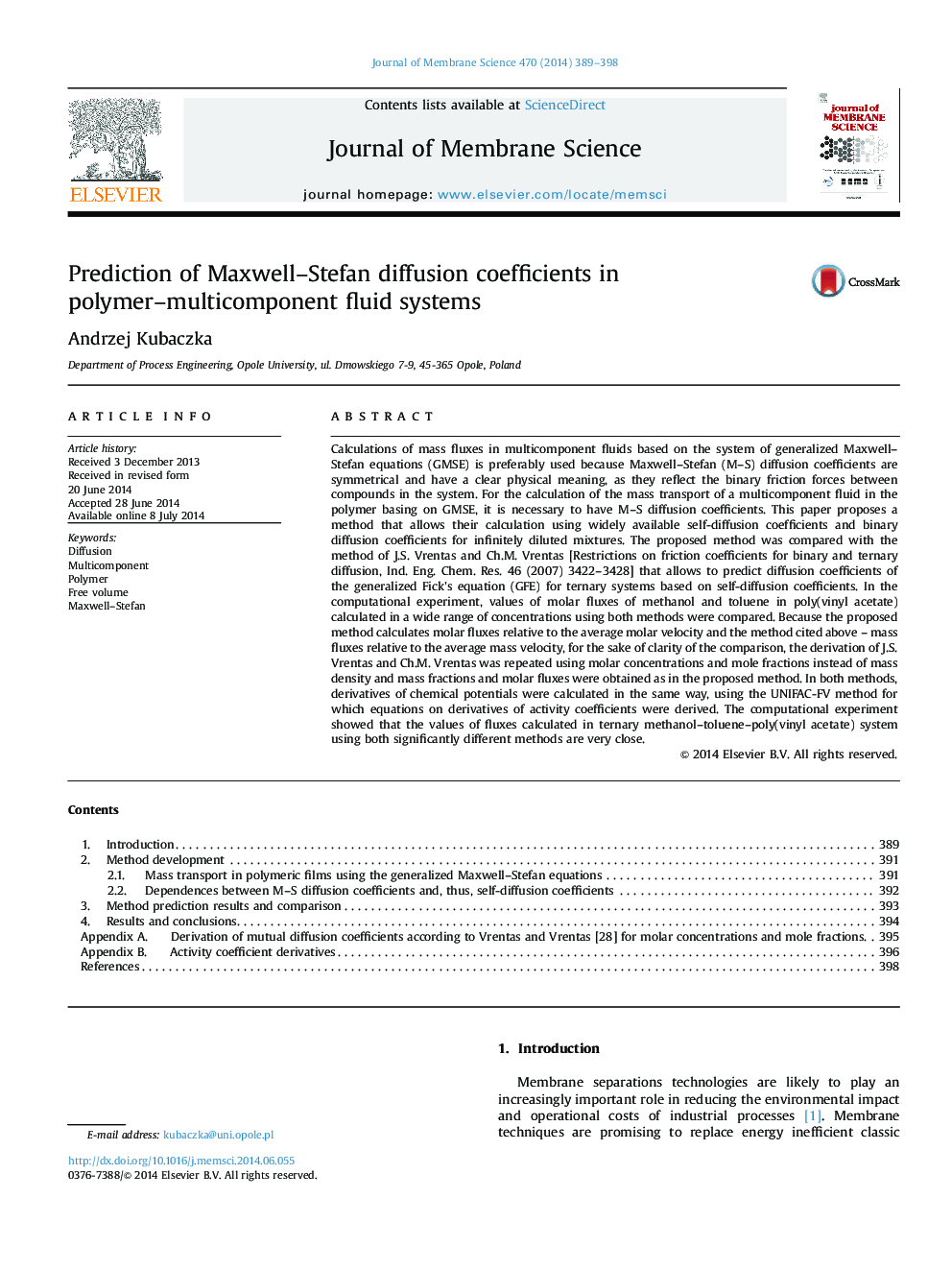| کد مقاله | کد نشریه | سال انتشار | مقاله انگلیسی | نسخه تمام متن |
|---|---|---|---|---|
| 633299 | 1456029 | 2014 | 10 صفحه PDF | دانلود رایگان |
• The proposed method allows prediction Maxwell–Stefan diffusivity in the polymers.
• The method uses self-diffusion coefficients and binary infinite dilution diffusivity.
• The computational experiment for methanol–toluene–PVAc was conducted.
• The method gives fluxes very close to the method of James and Christine Vrentas.
• The equations for the derivatives of activity were derived from the UNIFAC-FV.
Calculations of mass fluxes in multicomponent fluids based on the system of generalized Maxwell–Stefan equations (GMSE) is preferably used because Maxwell–Stefan (M–S) diffusion coefficients are symmetrical and have a clear physical meaning, as they reflect the binary friction forces between compounds in the system. For the calculation of the mass transport of a multicomponent fluid in the polymer basing on GMSE, it is necessary to have M–S diffusion coefficients. This paper proposes a method that allows their calculation using widely available self-diffusion coefficients and binary diffusion coefficients for infinitely diluted mixtures. The proposed method was compared with the method of J.S. Vrentas and Ch.M. Vrentas [Restrictions on friction coefficients for binary and ternary diffusion, Ind. Eng. Chem. Res. 46 (2007) 3422–3428] that allows to predict diffusion coefficients of the generalized Fick׳s equation (GFE) for ternary systems based on self-diffusion coefficients. In the computational experiment, values of molar fluxes of methanol and toluene in poly(vinyl acetate) calculated in a wide range of concentrations using both methods were compared. Because the proposed method calculates molar fluxes relative to the average molar velocity and the method cited above – mass fluxes relative to the average mass velocity, for the sake of clarity of the comparison, the derivation of J.S. Vrentas and Ch.M. Vrentas was repeated using molar concentrations and mole fractions instead of mass density and mass fractions and molar fluxes were obtained as in the proposed method. In both methods, derivatives of chemical potentials were calculated in the same way, using the UNIFAC-FV method for which equations on derivatives of activity coefficients were derived. The computational experiment showed that the values of fluxes calculated in ternary methanol–toluene–poly(vinyl acetate) system using both significantly different methods are very close.
Journal: Journal of Membrane Science - Volume 470, 15 November 2014, Pages 389–398
